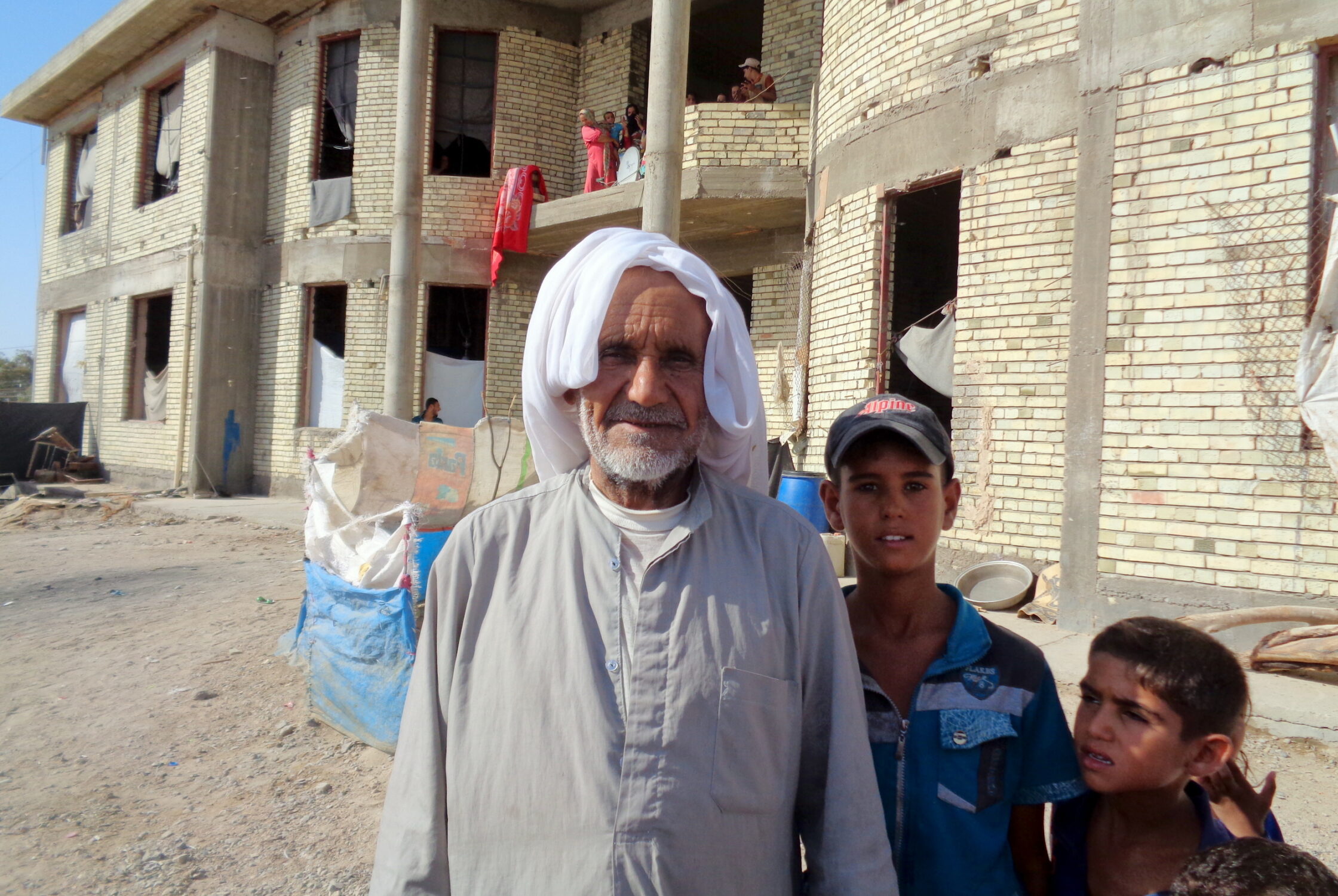Displaced in Iraq: Little Aid and Few Options

Iraq has been the site of significant internal displacement for well over a decade. However, this displacement has increased dramatically over the last two years as the security situation in central and south Iraq has deteriorated.
Armed conflict at the beginning of 2014 drove hundreds of thousands of people out of Anbar’s two main cities of Fallujah and Ramadi into the surrounding areas and to other provinces. By the end of that summer, when the Islamic militant group known as ISIS took over the districts of Mosul and Sinjar in Ninewa province, the number of IDPs reached 1.7 million.
Today, there are 3.2 million internally displaced people (IDPs) in Iraq. They are living in rented accommodations, unfinished buildings, and makeshift camps, often without adequate food, water, or medical care, wondering when it might be safe to go home. Of the 3.2 million displaced, 2.3 million are in central and south Iraq. However, the humanitarian response in that region of the country is very much in development right now. There is an urgent need for a more accurate and detailed picture of the IDPs’ locations and needs, for better humanitarian access to many locations, and for adequate funding to get the work done. Since humanitarian actors have no control over the security situation in the country, they need to look more closely at ways to deliver aid under the current security conditions.
Background
Right now in Iraq, 2.3 million internally displaced people (IDPs) in the central and south provinces of the country struggle to get by with extremely limited humanitarian assistance. Attention to and assistance for the hardships and suffering of IDPs in Iraq over the past few years have focused mainly on those in the Kurdistan Region of Iraq (KRI), an area of the country that is stable and where aid providers can often function with fewer challenges to their safety. But many IDPs outside the KRI live in locations that are dangerous to travel to or off-limits entirely for aid agencies due to the unpredictable security situation. One consequence of this inability of humanitarian groups to maintain consistent operations is that far less is known about specific humanitarian needs for those in the central and south provinces of the country.
“People don’t just need eating and drinking.
Camp manager in an IDP settlement, Baghdad governorate
They need hope and solutions.”
Recommendations
- UN agencies and their international non-governmental organization partners need to immediately strengthen their presence in Baghdad to coordinate and communicate more easily with each other and the Iraqi government.
- The Iraqi government should immediately improve the Public Distribution System re-registration process for internally displaced persons so they can continue receiving their monthly food rations in new locations.
- The UN Office for the Coordination of Humanitarian Affairs should work with its partners to find innovative ways to deliver aid in besieged and hard-to-reach areas and, where possible, should adapt successful models from other situations and regions for the Iraq context.
- The U.S. government should expand humanitarian-specific capacity-building programs for local Iraqi groups providing help to IDPs.
- The U.S. government should find ways to support local Iraqi volunteer groups doing humanitarian work, including consideration of using umbrella organizations for training and follow-up.
- The U.S. Agency for International Development should make a formal commitment to keep its mission in Iraq open in order to responsibly carry out training and follow-up as an ongoing part of its civil society building work in the country.
Daryl Grisgraber was in Anbar, Babil, and Baghdad governorates in August 2015.